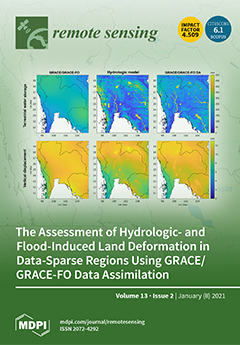An estuarine wetland is an area of high ecological productivity and biodiversity, and it is also an anthropic activity hotspot area, which is of concern. The wetlands in estuarine areas have suffered declines, which have had remarkable ecological impacts. The land use changes,
[...] Read more.
An estuarine wetland is an area of high ecological productivity and biodiversity, and it is also an anthropic activity hotspot area, which is of concern. The wetlands in estuarine areas have suffered declines, which have had remarkable ecological impacts. The land use changes, especially wetland loss, were studied based on Keyhole and Landsat images in the Liao River delta from 1962 to 2016. The dynamics of the ecosystem service values (ESVs), suitable habitat for birds, and soil heavy metal potential ecological risk were chosen to estimate the ecological effects with the benefit transfer method, synthetic overlaying method, and potential ecological risk index (RI) method, respectively. The driving factors of land use change and ecological effects were analyzed with redundancy analysis (RDA). The results showed that the built-up area increased from 95.98 km
2 in 1962 to 591.49 km
2 in 2016, and this large change was followed by changes in paddy fields (1351.30 to 1522.39 km
2) and dry farmland (189.5 to 294.14 km
2). The area of wetlands declined from 1823.16 km
2 in 1962 to 1153.52 km
2 in 2016, and this change was followed by a decrease in the water area (546.2 to 428.96 km
2). The land use change was characterized by increasing built-up (516.25%), paddy fields (12.66%) and dry farmland (55.22%) areas and a decline in the wetland (36.73%) and water areas (21.47%) from 1962–2016. Wetlands decreased by 669.64 km
2. The ESV values declined from 6.24 billion US$ to 4.46 billion US$ from 1962 to 2016, which means the ESVs were reduced by 19.26% due to wetlands being cultivated and the urbanization process. The area of suitable habitat for birds decreased by 1449.49 km
2, or 61.42% of the total area available in 1962. Cd was the primary soil heavy metal pollutant based on its concentration, accumulation, and potential ecological risk contribution. The RDA showed that the driving factors of comprehensive ecological effects include wetland area, Cd and Cr concentration, river and oil well distributions. This study provides a comprehensive approach for estuarine wetland cultivation and scientific support for wetland conservation.
Full article





